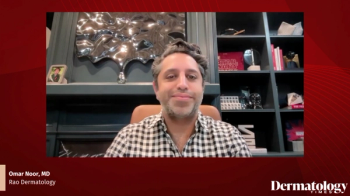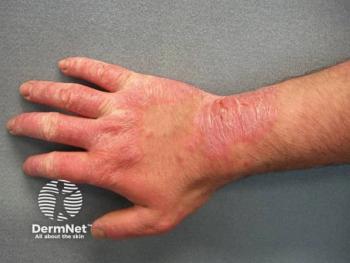
Christina Feser, DO, Shares Therapeutic Advances in Hidradenitis Suppurativa From SCALE 2025

At SCALE 2025, Christina Feser, DO, FAAD, FAOCD, spotlighted the rapidly expanding pipeline of diverse therapies for patients with HS.
At the
Feser, a board-certified dermatologist based in Nashville and principal investigator at IC Research in Murfreesboro, Tennessee, emphasized that “HS is a really growing field,” pointing to a wave of clinical research that mirrors past surges in psoriasis and atopic dermatitis innovation. With an increasing number of studies under way, the field is finally gaining long-overdue traction.
“There are numerous trials in development in route from phase 1 to phase 4,” said Feser. “With a wide variety of different mechanisms of action, we can approach patients in alternative ways, really to get patients better in the most efficient and the safest way possible.”
The pipeline of therapies for HS is not just expanding—it’s diversifying. Feser described a therapeutic landscape where novel agents are targeting HS through multiple, distinct mechanisms of action (MOAs), signaling a major step forward for a disease that has historically lacked sufficient treatment options.
“I would really call this a robust pipeline in that there are numerous agents in development, and they’re really not all repetitive or similar mechanisms of each other,” she explained. “We’re diving into alternative MOAs to really help better serve our patients in different ways possible.”
In her SCALE 2025 session, Feser focused on clinical-stage therapies ranging from phase 2 to phase 4, illustrating how the HS treatment landscape is evolving beyond TNF-alpha inhibitors like adalimumab.
“For an HS patient, I do believe it’s a really hopeful time,” she noted. “We’re progressing through different-based therapies to be able to provide better care and really give these patients more symptomatic relief.”
Feser’s message was clear: HS management is on the cusp of transformation. With several new treatments on the horizon—some injectable, some oral, and even an investigational infusion therapy—clinicians will soon have more tools to individualize care.
The rise in therapeutic development, she added, highlights the importance of staying informed and engaged as new options emerge.
“I really do think it’s a time when we need to really stay at the top of the game, essentially, and follow the trends and follow the research,” said Feser. “So once additional agents are available—especially for our patients with such an unmet need who are still struggling despite multiple FDA-approved agents—we can really take the next step and offer our patients something new, something different, and something hopefully more effective, to really give them the relief that they deserve.”
As excitement builds around the growing HS pipeline, Feser encourages fellow dermatologists to stay vigilant and proactive in exploring these innovations, so that patients have access to the most current and effective treatment options.
Newsletter
Like what you’re reading? Subscribe to Dermatology Times for weekly updates on therapies, innovations, and real-world practice tips.



















